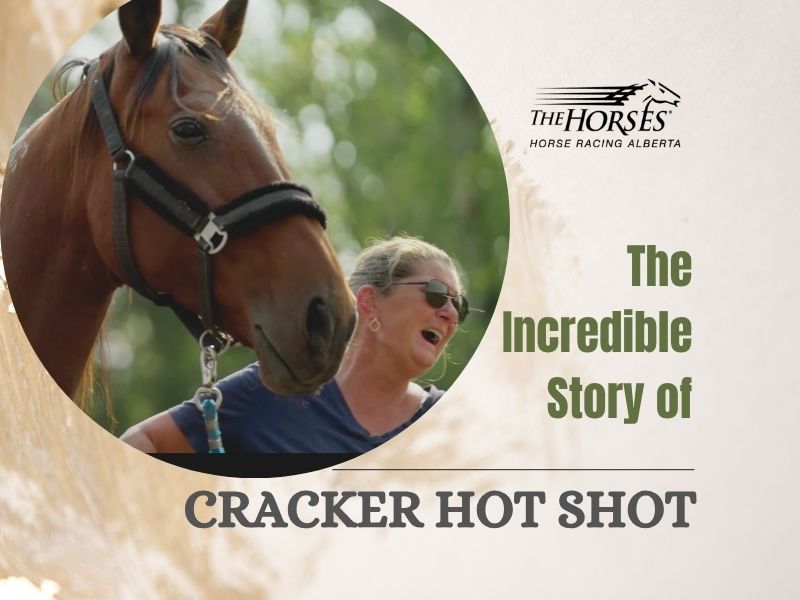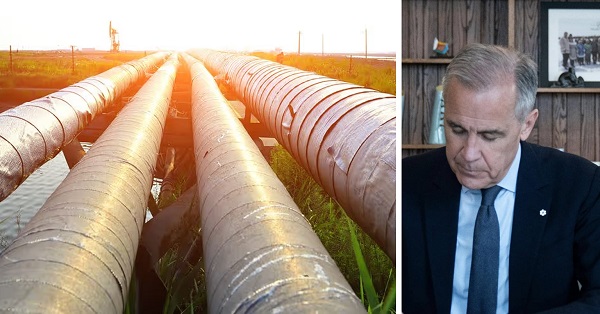Alberta
Scotia Place – Calgary unveils design for new arena / events centre

News release from the City of Calgary
Scotia Place, Calgary’s new event centre, designed as a place for community where there is room for everyone
The City of Calgary and Calgary Sports and Entertainment Corporation (CSEC) are excited to reveal the design for Calgary’s new event centre – formally named Scotia Place.
The design is influenced by the ancestral and historical land of Indigenous Peoples and the culturally significant site that embodies our shared purpose – to gather. It brings together Indigenous cultural perspectives with Calgary’s and the region’s natural beauty, reflecting the four elements of nature – fire, ice, land and air.
A striking feature of the building is the central structure with a textured flame motif that emulates a home fire, which is further amplified when it is lit at night. The home fire, a place of warmth and energy that brings people together to share stories of the past and create stories for the future, rises from the white, glacial-like forms that define the lower parts of the building.
“When you consider that Calgary is already the envy of other cities with a new world-class convention centre in the heart of the Culture + Entertainment District, the addition of Scotia Place is another signal to investors that our city understands how to build a future that leverages hospitality and hosting as its core strengths,” says Mayor Jyoti Gondek. “We are also acknowledging and honouring the foundational role that Indigenous communities have played for generations in making Calgary, and now Scotia Place, a space where we all belong.”
Scotia Place, which is scheduled to open in fall 2027, celebrates the area’s importance as a place for all and will be a landmark attraction in Calgary’s emerging Culture + Entertainment District. More than a building, however, the 10-acre city block is designed for community and connection and includes a community rink, outdoor and indoor plazas spaces, four restaurants, the Calgary Flames Team Store, and future development opportunity in the northeast corner. It will provide gathering places and amenities for the 8,000 people who will live in this new downtown neighbourhood.
“Calgary has a long history of hosting world-class events, drawing millions of visitors to the city each year, generating revenue for local businesses, and boosting the economy,” says Danielle Smith, Premier of the Province of Alberta. “With construction on the Calgary Rivers District and Event Centre now underway, Calgary is one step closer to a revitalized downtown that will bring new energy into the city, attract more exciting events, and create jobs to improve the quality of life for Calgarians.”
A development permit application for the facility was submitted on July 19, 2024. This was a significant milestone for the project team, consisting of CAA ICON, HOK-DIALOG, and CANA/Mortenson. People interested in following or commenting on the permit can find the application at Calgary.ca/dmap. The application is expected to be heard by the Calgary Planning Commission by end of 2024.
“This is an important day for Calgary,” says Councillor Sonya Sharp, Event Centre Committee Chair. “Today is about so much more than the designs of a building. Today is the unveiling of a place where Calgarians and visitors from around the world will make memories at concerts, and sport and community events. I hope that everyone is as excited as we are, knowing that Scotia Place will become the complete experience in our new Culture & Entertainment District.”
“At CSEC, a key component of our mission is to be the heartbeat of our community, create connections and bring people together,” said Robert Hayes, CSEC President and CEO. “Scotia Place will become the perfect home to achieve and share this mission with all Calgarians. Seeing the design brings the vision of so many contributors to life. We are especially thankful to the City of Calgary and the Province of Alberta for their leadership and support to help bring us to this point. In stride with our partner Scotiabank, we are very proud to play our role in presenting Scotia Place as the culmination of diligence and passion, that is now visual in this breathtakingly beautiful and meaningful facility.”
“For years we have seen firsthand the value these partnerships bring to the communities in which we operate and for our clients,” said Aris Bogdaneris, Group Head, Canadian Banking of Scotiabank. “Scotia Place introduces a bold new vision for what will be Alberta’s premier sports and entertainment venue. For nearly 20 years, Scotiabank has been a proud partner of Calgary Sports and Entertainment Corporation and together, we are committed to bring fans and our clients an unforgettable experience when they walk through the doors of Scotia Place.”
“We are excited to start the construction of the critical infrastructure needed to build thousands of new homes and to make the Calgary’s new Culture + Entertainment district a reality,” says Devin Dreeshen, Minister of Transportation and Economic Corridors. “Albertans expect basic infrastructure to be maintained and improved and this commitment from the province goes a long way in helping Calgary build these projects.”
Acknowledging the significance of the building’s location at the confluence of the Bow and Elbow Rivers on the ancestral land of the Treaty 7 Peoples and the Metis Nation, The City, CSEC, HOK-DIALOG and CAA ICON worked with an Indigenous Advisory Group that included representatives from the Treaty 7 Nations, the Métis Nation of Alberta, Region 3, and the Urban Indigenous community throughout the design process.
“It was great to be part of a truly representative voice that included all indigenous peoples of southern Alberta regarding the design of this center acknowledging the historic significance of the land it sits on to the Metis people,” said Carmen Lasante Captain of the Calgary Elbow Metis District. “Inclusivity is a core part of who the Metis are. The City has worked hard to include many diverse histories together in creating this space.”
“Engaging in the right way is fundamental to the success of relationship development with the Indigenous communities, as we have played a critical role in the identity of the land now known as the city of Calgary as the Indigenous nations are inextricable linked to the landscape and environment,” says Ira Provost, Piikani Nation Consultation
A key theme heard often during the Indigenous engagement sessions was “Come in, there is room”, making it clear that Scotia Place needs to be a place that is designed for all.
The public plazas are designed to honour the deep-rooted connection that Indigenous Peoples have with the land, incorporating representations of the tipi, Métis Trapper’s Tent, and elements of Alberta’s world-renown natural landscape.
An important design decision was to lower the event and ice surface so that the primary concourse will be at street-level. Calgarians and visitors will be able to move seamlessly between the curb, the primary concourse and the outdoor public plazas.
“We at DIALOG are thrilled to join forces with HOK and combine our unique expertise to transform Calgary’s Event Centre into the catalyst for a dynamic new urban community,” says Doug Cinnamon, Partner Architect at DIALOG.
“Other design principles including public realm activation, the integration of indigenous influences, public art & storytelling, sustainability, and a balance between past, present, and future is central to our vision. The ultimate goal is to ensure seamless accessibility, promote mixed uses, and create vibrant public areas for everyone to enjoy. This joint redesign represents an opportunity to spur investment into the area and enhance its cultural vitality, anchoring Calgary’s position as a thriving, bustling community hub.”
Scotia Place is a generational investment in Calgary’s emerging vibrant Culture + Entertainment District. A modern event centre with universal accessible design throughout and with energy and water conservation built in to maximize efficiencies and the ability to be net-zero by 2050, Scotia place is designed to serve Calgary’s growing community for decades to come.
Construction begins this week. Additional information about Scotia Place including design renderings, a video, and frequently asked questions is available on Calgary.ca/ScotiaPlace.
Alberta
Emissions Reduction Alberta offering financial boost for the next transformative drilling idea
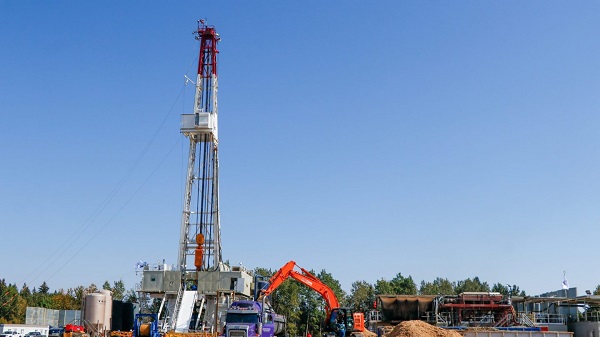
From the Canadian Energy Centre
$35-million Alberta challenge targets next-gen drilling opportunities
‘All transformative ideas are really eligible’
Forget the old image of a straight vertical oil and gas well.
In Western Canada, engineers now steer wells for kilometres underground with remarkable precision, tapping vast energy resources from a single spot on the surface.
The sector is continually evolving as operators pursue next-generation drilling technologies that lower costs while opening new opportunities and reducing environmental impacts.
But many promising innovations never reach the market because of high development costs and limited opportunities for real-world testing, according to Emissions Reduction Alberta (ERA).
That’s why ERA is launching the Drilling Technology Challenge, which will invest up to $35 million to advance new drilling and subsurface technologies.
“The focus isn’t just on drilling, it’s about building our future economy, helping reduce emissions, creating new industries and making sure we remain a responsible leader in energy development for decades to come,” said ERA CEO Justin Riemer.
And it’s not just about oil and gas. ERA says emerging technologies can unlock new resource opportunities such as geothermal energy, deep geological CO₂ storage and critical minerals extraction.
“Alberta’s wealth comes from our natural resources, most of which are extracted through drilling and other subsurface technologies,” said Gurpreet Lail, CEO of Enserva, which represents energy service companies.
ERA funding for the challenge will range from $250,000 to $8 million per project.
Eligible technologies include advanced drilling systems, downhole tools and sensors; AI-enabled automation and optimization; low-impact rigs and fluids; geothermal and critical mineral drilling applications; and supporting infrastructure like mobile labs and simulation platforms.
“All transformative ideas are really eligible for this call,” Riemer said, noting that AI-based technologies are likely to play a growing role.
“I think what we’re seeing is that the wells of the future are going to be guided by smart sensors and real-time data. You’re going to have a lot of AI-driven controls that help operators make instant decisions and avoid problems.”
Applications for the Drilling Technology Challenge close January 29, 2026.
Alberta
New era of police accountability

The Police Review Commission (PRC) is now fully operational, giving Albertans a single, independent process to file policing complaints and ensure accountability.
Alberta’s government is putting the province at the forefront of police oversight in Canada with the creation of the PRC. This new commission replaces the current patchwork of police investigating police with one independent body responsible for receiving complaints, conducting investigations and overseeing disciplinary hearings. By centralizing these functions within a single, independent agency, Alberta is ensuring complaints are handled fairly and consistently.
“The Police Review Commission represents a new era in how Alberta addresses policing complaints. These changes are part of a broader paradigm shift where police are no longer seen as an arm of the state, but rather an extension and a reflection of the community they serve. As an independent agency, it is committed to fairness, accountability and public trust, ensuring every complaint is investigated impartially and resolved openly.”
The Police Amendment Act, 2022 laid the groundwork for this new model, establishing a modern approach to oversight built on accountability, consistency and public confidence. The PRC will manage the full complaints process from receiving and assessing, to investigating and resolving complaints related to police conduct, including serious incidents and statutory offences.
“The Alberta Association of Chiefs of Police welcomes the launch of the Police Review Commission as a meaningful step toward enhanced oversight and greater transparency in policing. By ensuring complaints are reviewed fairly and impartially, the Commission will help strengthen accountability and reinforce public trust in Alberta’s police agencies. Police leaders across the province are committed to working with the Commission and our communities to ensure every Albertan has confidence in the integrity of our police services.”
A timely and transparent complaint resolution process is essential for both the public and police. That is why the PRC must complete investigations within 180 days, and if more time is needed, the chief executive officer must publicly report on delays and provide justification. This ensures clarity, predictability and accountability throughout the process. The commission will be arm’s length from government and police services, meaning people can have greater confidence that their complaints will be investigated and resolved impartially.
“Our goal is to build trust in policing by delivering timely resolutions and fair, consistent outcomes that put people first. Every complaint will be reviewed thoroughly and handled with the transparency and respect Albertans expect and deserve.”
The PRC can also initiate systemic reviews related to police conduct or emerging trends without the need for a public complaint, and these reviews must be made public. Together, these measures create a clear, accountable process that strengthens transparency, supports continuous improvement and enhances trust in how police oversight is carried out across Alberta.
“Public safety and the confidence the public has in our police services and service members are incumbent for effective and responsible service delivery. The PRC has been developed so that Albertans may have a responsible and impartial mechanism to voice concerns regarding delivery of policing services in Alberta. I am confident that the PRC will be an inclusive and diverse representation of the communities, so we may better understand the most appropriate and effective way to respond to concerns regarding police services. I look forward to the positive outcomes for the community.”
The commission’s design was informed by engagement with Indigenous communities, law enforcement partners, municipal officials and community organizations, ensuring its structure and training reflect Alberta’s diversity and values.
Quick facts
- The PRC will handle complaints in three categories:
- Level 1: Death, serious injury and serious or sensitive allegations involving all police services in Alberta, as well as peace officer agencies.
- Level 2: Allegations of criminal and other statutory offences involving all police services in Alberta.
- Level 3: Complaints about non-criminal misconduct involving officers employed by municipal and First Nations police services.
- Complaints that fall outside the three categories will be referred to the appropriate bodies or agencies for review.
- The Alberta Serious Incident Response Team (ASIRT) will now operate under the PRC.
-

 Energy2 days ago
Energy2 days agoCanadians will soon be versed in massive West Coast LPG mega-project
-
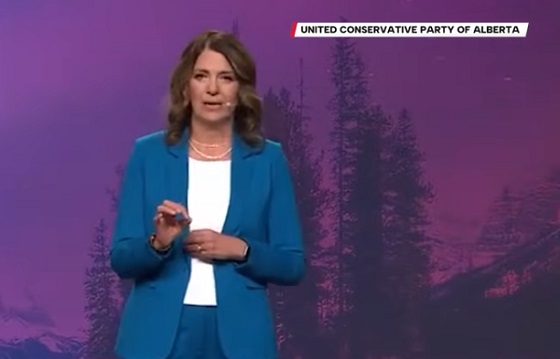
 Alberta2 days ago
Alberta2 days agoKeynote address of Premier Danielle Smith at 2025 UCP AGM
-

 Daily Caller2 days ago
Daily Caller2 days agoTom Homan Predicts Deportation Of Most Third World Migrants Over Risks From Screening Docs
-

 C2C Journal24 hours ago
C2C Journal24 hours agoLearning the Truth about “Children’s Graves” and Residential Schools is More Important than Ever
-
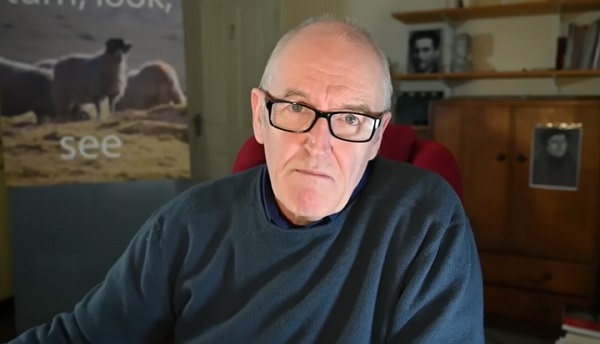
 COVID-192 days ago
COVID-192 days agoThe dangers of mRNA vaccines explained by Dr. John Campbell
-

 National1 day ago
National1 day agoMedia bound to pay the price for selling their freedom to (selectively) offend
-

 Alberta1 day ago
Alberta1 day agoNew era of police accountability
-

 Artificial Intelligence2 days ago
Artificial Intelligence2 days ago‘Trouble in Toyland’ report sounds alarm on AI toys

